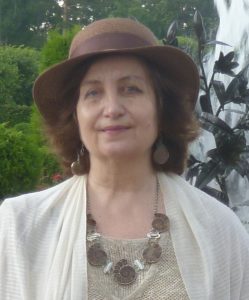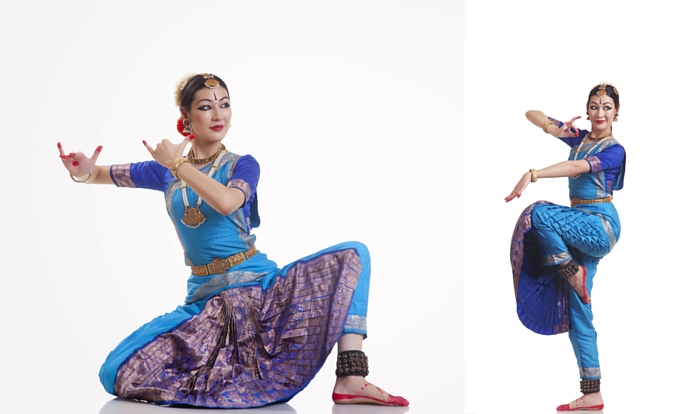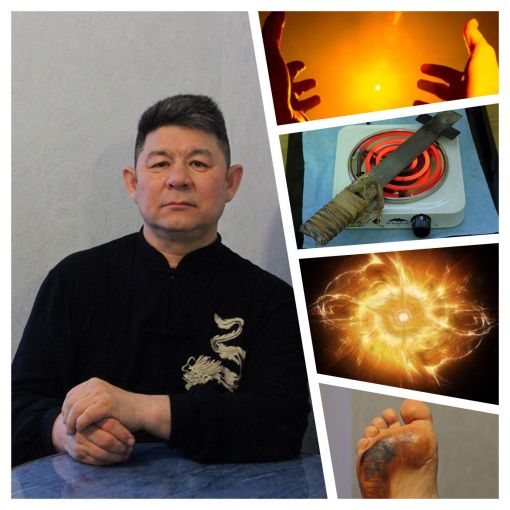
Irina Kuris, Grand PhD, Professor (Sainkt-Petersburg)
There are many ways to creativity. One can say surely that any kind of creativity – is an exit into special state which is not always under our control. Depending on the state it can be named differently. For one person it’s a mystical experience or insight, for another one – exit to the upper or a breakthrough to higher creativity levels where one is conscious of Some higher body being the real Creator. All this we include in our personalized set of transpersonal experience. It is a «here and now» event for one person and a process taking part in space and time for another one. The properties of transpersonal experience, of course depend on the kind of creativity involved, on the tools that help one to enter The Field of Knowledge expanding one’s conscious experience.
Here we are speaking about a dance as a transpersonal creative experience which combines «here and now» state and aftereffects bringing us to another kinds of creativity. The Dance is a sacral action that discovers our inner world’s striking possibilities and expands the limits of perception of the outer world. It’s an unusual kind of relaxational holistic movement in which the performer realizes that he/she is led by a higher power. This is the rare case when such a power is not to be resisted as the performer in a way ceases to be a common man…
Meanwhile your consciousness is not dimmed it is more lucid than in everyday situations. The result of this trance experience of special kind is an expanded state of consciousness. This effect is surprising, unusual, unpredictable. It transforms you, leads to new horizons. It brings you to a state of total happiness, blending the joy of the state that cures soul and body, with a joy of the motion, and a bliss of creativity. This understanding came to me by different ways, including automatic writing, spontaneous motion, meditation training and transpersonal experience.
This step by step experience started in a Dance that made me us look for explanations related experiences originating in the silence of meditation and in the post-meditation states.
The experience made me to perform a search in esoteric knowledge, mythology and psychology, in the problems posed by creativity as a natural state of human beings in the information concerning not only the dance as such but also the dance as a metaphor.
So let’s consider turn to the dance. For the most of people it is a motion first of all. From this point of view dance is a sum of successive positions, gestures and movements that one performs in certain rhythm and rate according to a gestalt of composition.
From this point of view dance includes many levels of body motion in space, building certain imaginary forms and spaces blending body movements with the pre-designed dance that always suffers some spatial limitations – be it a ring of mere 1,.5m diameter or a largest arena in the world.
Certainly one must learn to move graciously in a right way. And the dance needs music to be identified as such. Music is mediated by a rhythm (internal or external). The term Dance embraces many stylistic variations. Dance is divided to living, popular distinctive, classical, folk, modern and so on. It can reflect certain national traits or transcend them. It can be a result of long training or represent spontaneous and relaxed holistic movement. It is this movement, naturally transforming itself to a sacral, spontaneous dance that guides you to a trance state governed by a different set of laws.
Relaxed activity is based on principles differing from usual practices. It is guided by an integral symphony of its components allowing to teach one’s body important lessons about lucidity of movements, and about building one’s energetic spaces—both inner and outer ones.
It allows to see and to feel one’s body in a different way, provides deep psychoemotional experience that leads to new intuitive knowledge of one’s Body.
In terms of transpersonal experience one can consider the dance: 1) as a sacral and (on higher level) even spontaneous action, 2) as a process and as a result of dancer’s progress and 3) as an interaction with space connecting the dancers and the viewers (if any). One can notice both immediate impact and also after-effects of the dance. Here we would like to consider sacral dance as a kind of interaction with surrounding spatial energy. (This does not mean one is allowed to neglect more trivial matters like physical training).
The word sacral means not only ritual, divine but also implies, cryptic, hidden and secret. Sacral motion combines esoterics (alternative, exclusive knowledge given by initiation) and spiritual aspect of the dancer’s soul.
Body language is inherently sacral. Learning it is like mastering intuitive knowledge. Body language like intuitive knowledge communicates stuff that is important and makes sense only for an addressee of the message. Possibly there is some another knowledge that only. The Sacral Dance can express in its plastic and that reaches the souls that are this or other way prepared for it.
This knowledge is kept in our primordial memory, reaches unconscious as a result of training and allows us to create the world of Beauty and Harmony in Dance. This way we open a new page of some internal Knowledge book, and introduce ourselves to new trance experience both in the process of dance and in its aftereffects.
Almost any ancient esoteric traditions, especially shamanism in which dance has an important part, contain safety measures. They are based on the gestalt of the dance as a set of successive interactions with space. At the same time dance closely corresponds to one’s world-view, reflecting the concepts of Chaos and Harmony, the unity of male and female principles human place in the world and so on. The dance reflects both the Universe and our interaction with it.
The sacral dance is essentially a spontaneous action. Maybe it sounds a bit strange for some of us. But the process is holistic and is rooted in “here” and “now”. The aim of spontaneous dance is to liberate yourself, to allow you to forget your physical body, to set you free, to initiate the power vibration so that you would enter the Flow not minding whether you set your foot correctly.
It’s like a wonder every time. And dancers themselves know that they are not only dancing but also mediating (a wonder passing through their body). Changing is the world around them, changing is their own point of view. Sometimes it proceeds gradually, sometimes happens instantly. This way or other, one comes to understanding that he is not the man he was before the dance. Again and again you return in dance to yourself, to your inner source(that was forgotten in daily routine), to your cryptic abilities.
All that allows to say that the dance is a one of the most potent natural tools for creating your Place of Power], allowing to work with the energo-informational field (as we usually say in Russia). It can be named variously, but most of the practitioners agree it is a special state of consciousness allowing for co-existence of two opposite states — relaxation and mental activity — at the same time. We can say the dance is a conscious work with subconscious experience, and this hints at simultaneous existence on two planes: apparent (physical) and latent (fine).
Trance as one of altered states of consciousness (ASC) has no strict and comprehensive definition. Probably it is due to evaluation of this state from incompatible personal standpoints. Nevertheless, the very being in the trance gives us a much wider (extended) outlook. Immersing in the trance is one of the conscious ways to subconscious informational structures embracing wide ranks: from corporal plane to the fine latent ones.
Higher sensory capacities allow for more effective conscious work with the subconscious. In its turn the subconscious can be considered to be a bridge to the unconscious; and we can make the bridge wider by using certain techniques.
In the dance we can notice the possibilities for more effective probing into the state, abiding in it and understanding it. Relaxational movement leads to definite corporal, emotional and mental liberation, to shifts of rhythms and images, to coordination of space and movements. Being valuable itself it’s an important tool for the next stage — entering the extended consciousness. It aims however not only at the deepest subconsciousness layers, but allows to extract definite cryptic information. Extended state of consciousness brings us a lot of transpersonal experiences including insight, spontaneous creativity etc.
One of these states reminds me an event that took place in India in 1996. I was learning The Shiva Dance (also known as Yoga Teacher, Shiva Dakshnamurti or Master of Dance, Shiva Nataraja).
During the training I learned that my teacher changed somewhat in dance every time. Finally I noted that I myself dance differently each time. But the most surprising for me was my teacher (Anant Pilai has family is involved in dancing for about 500 years) obviously enjoyed that and was glad as a child. We discussed the topic many times. He told me about motion figure in which horizontal 8 dominated (infinity or bee dance basic element). He made me repeat and remember rhythmical syllables – tala unaccustomed to my ears. I used to enter to special state that allowed me to move freely forgetting the need to follow the memorized gestures. It was not difficult for me to learn the dance language — quite specific one with very elaborate kind of coordination. Later I came to conclusion that teacher had led me to altered state purposely. He probably made me not to learn the dance but rather to get it otherwise, to let the movements “to dance me”. Having born inside, they passed through my body, my arms, legs, ever through my fingertips… Later I understood the sacral nature of the Shiva Dance. This process surprisingly combined motion training and a chance to re-create one’s life in the dance. The dance was a life in some sense. Like our life it brought us insights and mystical experiences.
Can we say the process is a creativity? I think yes, while it’s not to set a final point… The sacral spontaneous dance is a conscious interaction with the Space that every moment is new and unknown. So we tend to understand it by dancing again and again. And it seems to encourage us granting the pleasure of creation and something else, hardly expressed by words. Lacking of this encouragement makes one’s life dull.



